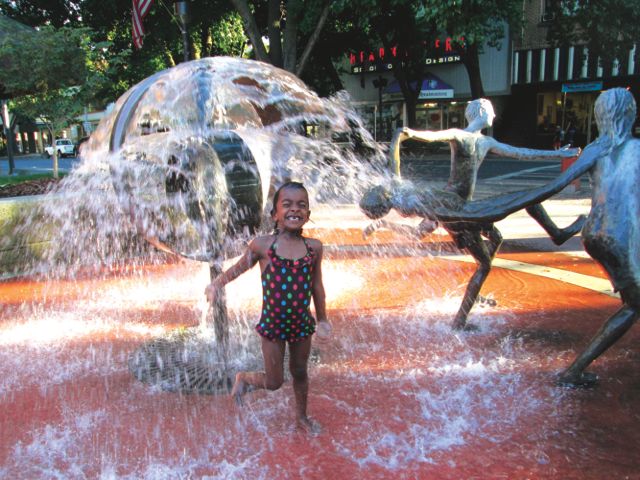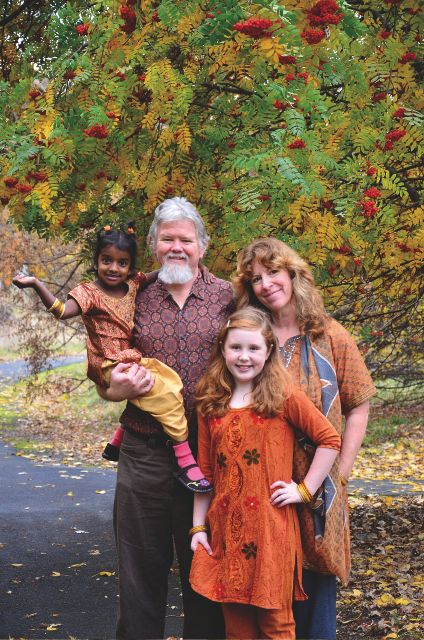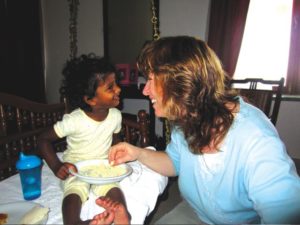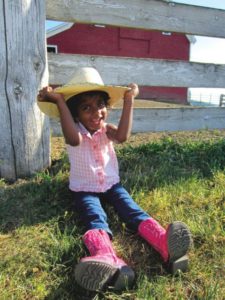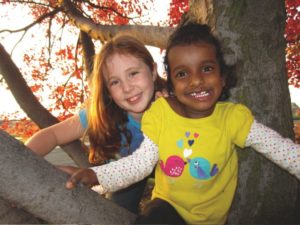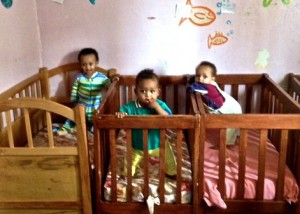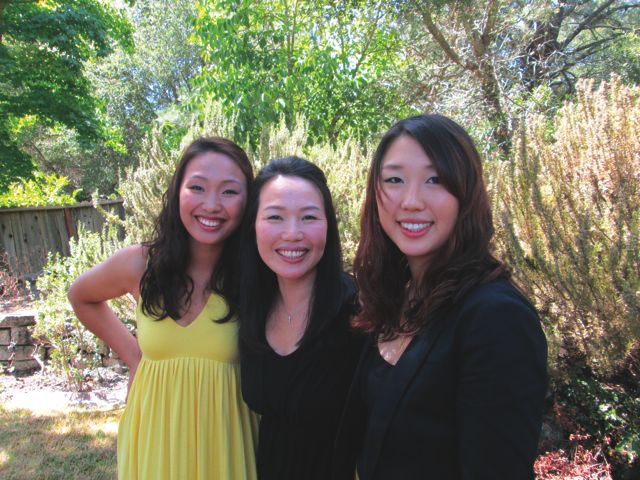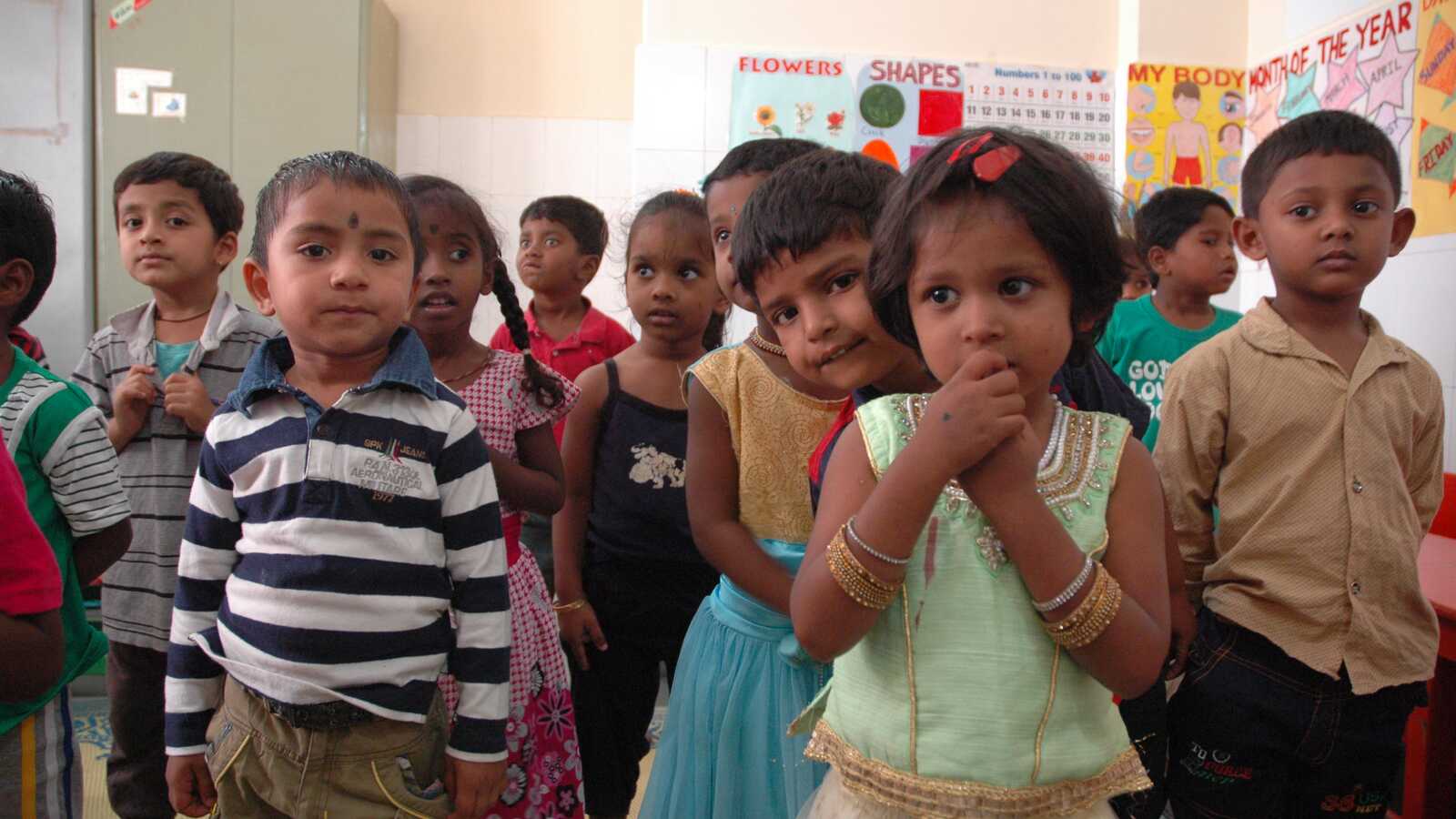While the Marran family teaches their daughter Anandi about appropriate boundaries, she teaches them about unbridled joy.
Today I ran across a photo of my daughter, Anandi, taken before she was my daughter. Dark curls framed her chocolate complexion and sparkling eyes. Instantly, I felt transported back to the time when we were preparing to welcome a new child into our family — a three-year-old foundling from half a world away.
It’s commonplace to hear adoptive families say it was “love at first sight” when they first saw a photo of the child they would adopt. That wasn’t the case for me. I thought this tiny girl from southern India was cute, to be sure, as did my husband. But a cute stranger, one whom I definitely didn’t feel “in love” with. As with an arranged marriage, love would have the opportunity to grow with the relationship. But it wasn’t guaranteed…for her or for us.
The first time I met Anandi — whose name means “bringer of joy” in Hindi — she was astride a white plastic horse that she had wheeled to the doorway of the therapy room at Vathsalya Charitable Trust (VCT), a care center in Bangalore and one of Holt’s legacy partners in India. She was tinier than I had envisioned; 25 pounds and not yet three feet tall at age three and a half, she seemed more toddler than preschooler. She soon showed herself to be a charming extravert, first posing for the camera, then commandeering it.
With Anandi were three of the women who had cared for and loved her for the past two-and-a-half years. Her foster mother, sister and aunt sat on the floor alongside me and my own foster mother, a remarkable woman who had brought me into her home as a 16-year-old and taught me a thing or two about loving the stranger in your midst. Thirty-three years later, she was my guide and companion on this adoption journey. It felt like coming full circle to be welcoming an unknown child into my family, much as she had done for me so many years before.
During the next ten days together in Bangalore and Delhi, Anandi accepted both me and my foster mother, seemingly without qualms. Except for nightly sleep disturbances that suggested separation trauma, she seemed to take it completely for granted that she suddenly had a new mother and grandmother. While it made for a shockingly smooth transition, I felt uneasy at her equanimity. If losing the only family she’s ever known doesn’t seem unsettling to her, how will OUR family ever matter to her? Of all the things I worried and prayed about during our adoption, experiencing overt rejection from our adopted child topped my list. With her instant acceptance, it seemed that God answered my prayers with utmost clarity. It never occurred to me that I would adopt a child who accepted me too readily!
Anandi’s easy transition seemed, at times, too good to be true — especially when she exhibited wildly enthusiastic affection for the man in line behind me at the bank, and every other person at the grocery store. She climbed into strangers’ laps at Starbucks, and gestured to be picked up by every parent at dance class. I began to feel like an “auntie,” as they referred to caretakers at VCT. Perhaps a favorite auntie, but nevertheless interchangeable with the numerous other “aunties” — and “uncles” — she encountered.
“Indiscriminate affection” is the term used to describe the behavior of children who lovingly interact with others with no regard to the level of relationship. It’s a survival mechanism that results from not having developed a permanent attachment to a caregiver. I knew that it was common in adopted children. I just didn’t know what it was going to feel like to parent a child who exhibited it so frequently. To quell my discomfort when she’d greet strangers a little too eagerly, I’d gently pull her away and joke that she’s practicing to be an ambassador when she grows up. I certainly wasn’t going to complain about having the world’s friendliest child!
Child psychologists will often describe indiscriminate affection as an attempt by the child to manipulate or control the emotional responses of the adults around them. I dislike the negative connotation of that terminology, however, as the child is most likely not conscious of his or her behavior. According to The St. Petersburg-USA Orphanage Research Team, a collaboration between the University of Pittsburgh and St. Petersburg State University in Russia, “The early experiences children have in orphanages often produce deficits in executive functioning skills (things like planning, organization, decision-making, inhibiting responses, etc). It’s quite possible that this superficial social ‘charm’ that children show is actually showing their inability to inhibit social responses around strangers.”
This rang true: Anandi could seemingly not stop herself from flinging herself into strangers’ arms!
Anandi has a language impairment that makes it difficult to explain to her that giving hugs and climbing into laps are only for family and friends. To teach appropriate boundaries, I have primarily relied on physical intervention and redirection. However, when she recently startled the pet store employee who was netting a guppy from the tank for us by suddenly thrusting her hand deep into his front pocket, I knew it was still very much a work in progress.
While Anandi still frequently goes right up to strangers, I am relieved that she seems to be developing a real attachment to us as her mama and papa. I feel a thrill course through me on the rare occasions when she clings to my leg and peeks out at someone she’s just met. And I was actually happy when, after a rare date night out, our babysitter reported that she cried for Mama and Papa at bedtime.
Since our arrival home on Thanksgiving Day two years ago, Anandi has taught me that it’s the simple moments — or rather, opportunities — that I need to be mindful of. While I teach her about appropriate boundaries, she teaches me about unbridled joy and enthusiasm. I make a conscious effort to do little things that nourish the concept that she is my daughter and I am her mama: feeding her by hand, playing “baby” and other reciprocal connecting games, saying “Hold Mama’s hand” instead of just “Hold my hand.” And although I can’t guarantee that our family will ever matter to her in the way I hope it will, I can make an effort to make this moment matter to her — and to me.
Maire Marran | Lewiston, Idaho
